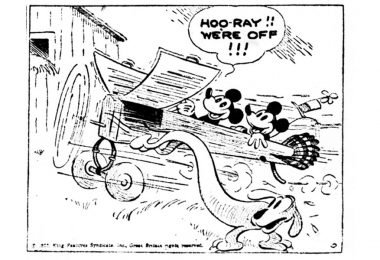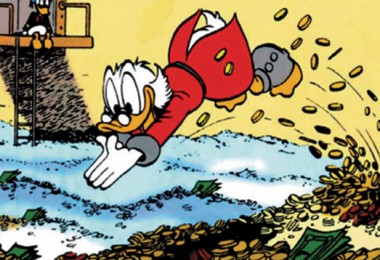Donald Duck turns over a new leaf of history on the first issue of Walt Disney
Disney became the proud owner of Marvel Comics in 2009, but the House that the Mouse Built has actually been a comic book powerhouse for quite some time. Witness the long-standing comic magazine that has been accurately billed as
“The Best-Selling Comic Book of All Time,” Walt Disney’s Comics and Stories.
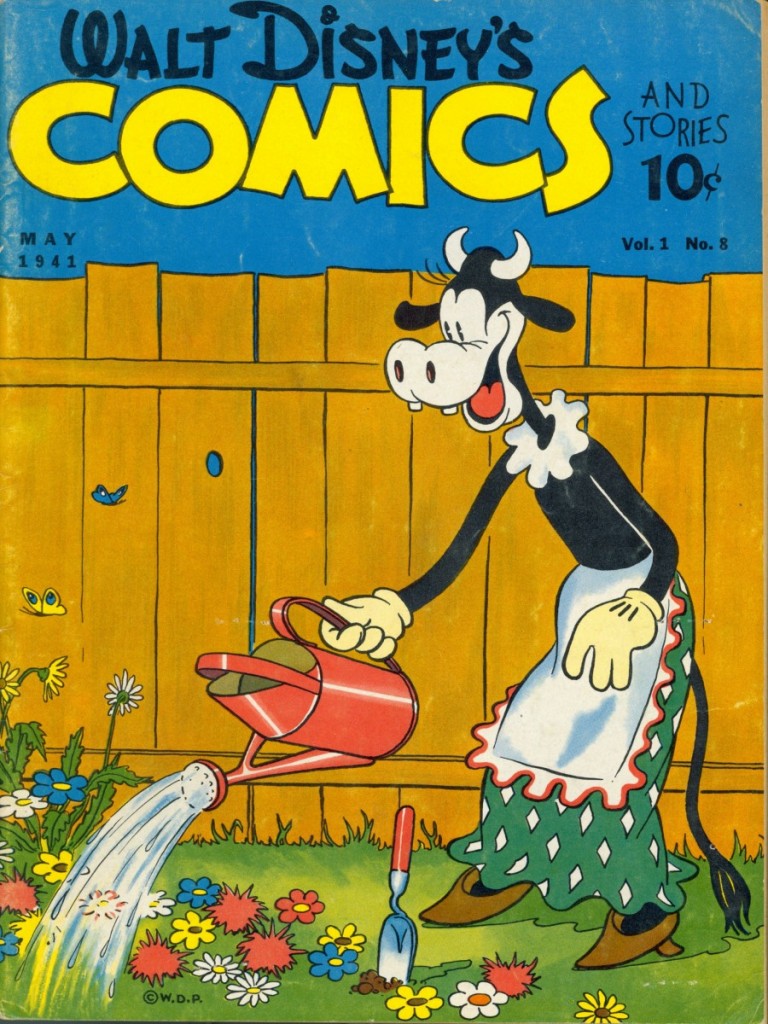
First published in October 1940, this unbeatable cavalcade of Disney comic art has been dancing off newsstands and into the hands of eager readers for seven decades. Bursting from behind an eye-catching covers that are often works of art themselves, Walt Disney’s Comics and Stories is chockful of hilarious antics and captivating derring-do, celebrating and spotlighting the whole Disney gang — headlined by Mickey Mouse and Donald Duck. In honor of its 70th anniversary, here’s a look through the artful annals of Walt Disney’s Comics and Stories.
It all started with a Mouse
— Mickey Mouse Magazine, that is, Walt Disney’s enormously popular periodical of the 1930s.
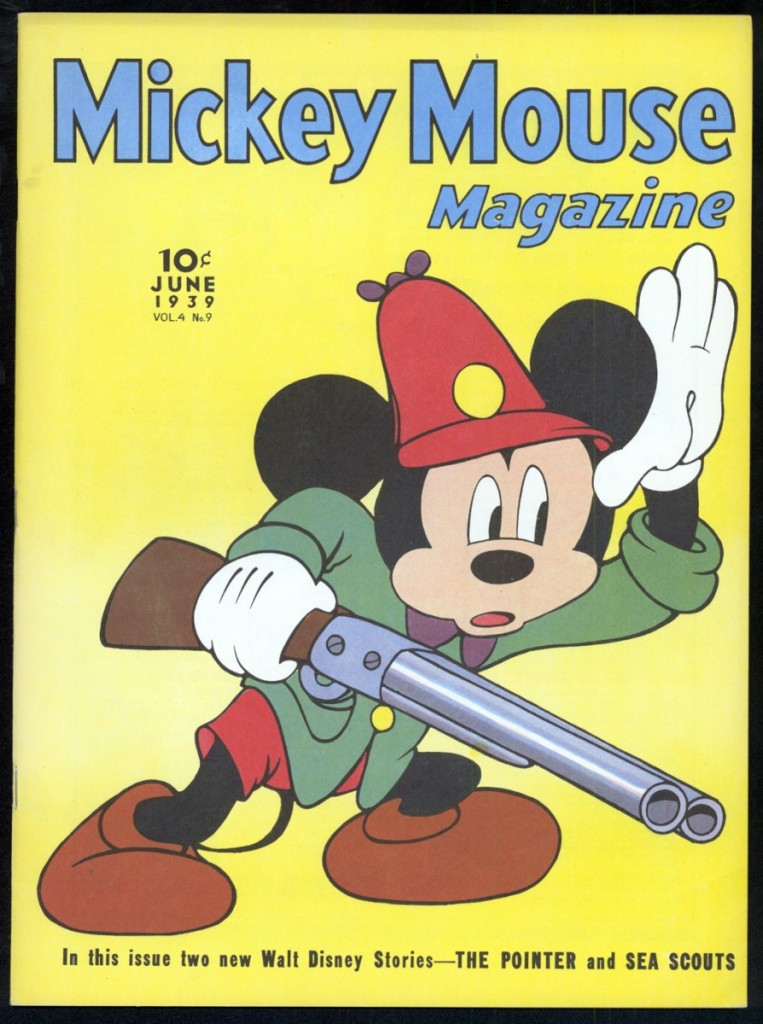
Comic books, meanwhile, exploded onto the publishing scene in 1934, taking a super-powered leap in popularity with the introduction of Superman in 1938. To feed the ever-growing comic craze, Mickey Mouse Magazine increasingly featured more and more comics until it finally evolved into a full-fledged funny book in 1940. Entitled Walt Disney’s Comics and Stories — tantalizingly indicating the kaleidoscope of graphic novelettes that would fill its vibrant pages — this jaunty new journal was an anthology created in the wake of the popular Detective Comics (launched in 1937) and Action Comics (launched in 1938) and which introduced Batman and Superman respectively. A few Disney comic books had already been devoured by an insatiable public but Walt Disney’s Comics and Stories was the first modern-style Disney comics title.
Each month Walt Disney’s Comics and Stories would be, as the editors promised,
“a new, colorful, exciting magazine filled with funny, thrilling adventures of Mickey, Donald and all the rest.”
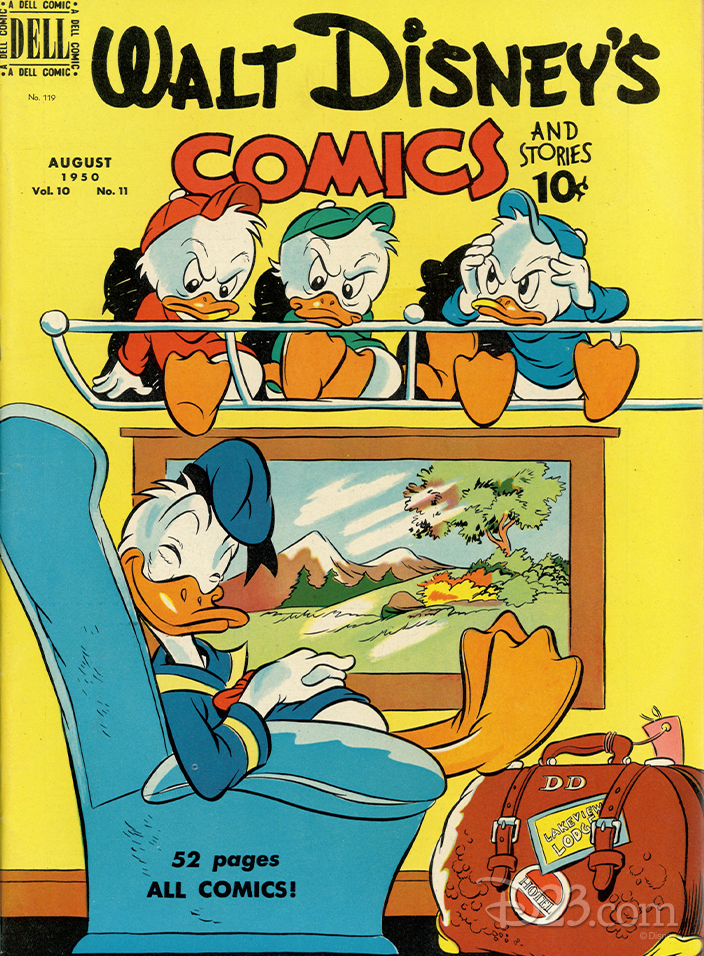
At first, its 64 pages (those were the good old days) overflowed with reprints of the Disney newspaper comic strips, but this backlog was nearly exhausted within a couple of years. Besides, the clamor then was for original comic book stories, such as those featuring super heroes. So in the December 1942 issue, #27, boasted the first all-new story, titled “The Carnival King,” which starred Joe Carioca, the freshly minted movie star of Saludos Amigos (1942).
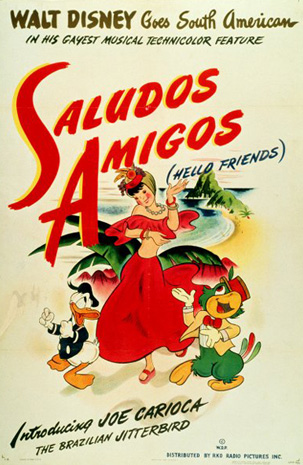
Joe was followed by a flurry other rarely spotlighted Disney celebrities, including Clara Cluck, Gremlin Gus and Tillie Tiger. Even Friend Owl from Bambi (1942) was highlighted in his own story, and that barnyard glamour gal Clarabelle Cow made the cover! Over the years, while also showcasing such Disney stalwarts as Chip ‘n’ Dale, Jiminy Cricket, and Winnie the Pooh, the “character actors” of the Disney oeuvre, such as Brer Rabbit, Ludwig Von Drake and the marvelous Mad Madam Mim, flourished in the character-friendly pages of Walt Disney’s Comics.
Former Disney animator and future creator of the famed Pogo comic strip, Walt Kelly drew many of the Walt Disney’s Comics covers, including this rib-tickling example from issue #94, July 1948.
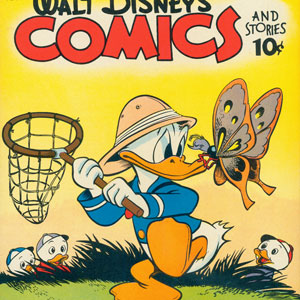
The Disney comic artists and writers also created characters expressly for the comics medium. Bucky Bug, who first bounded into the world of comics in the Silly Symphony Sunday newspaper page, was an early favorite, appearing in brand-new stories, often drawn by Carl Buettner, in which Bucky and his cute-as-a-bug pals June and Bo spoke in sprightly verse. While Scamp, the impish puppy of Lady and Tramp, Grandma Duck, and comic book superstar Uncle Scrooge, were all Walt Disney’s Comics luminaries, there was also Li’l Bad Wolf. Inspired by the three silly-but-sinister sons of the Big Bad Wolf, who first appeared in Three Little Wolves (1936), Li’l Bad Wolf was, in the pages of many issues of Walt Disney’s Comics, actually the very good singular offspring of the classic piggy-chasing wolf. Good-natured Li’l Wolf had his paws full trying to placate his “Pop,” who, of course, is drastically frustrated his son isn’t as big and bad as he is. To comically complicate matters even more Li’l Wolf’s best friends are the Three Little Pigs. (Let’s face it — no matter how knotty your relationship with your father might be, at least he’s not trying to eat your friends.)
Walt Disney’s Comics and Stories really hit the big time with the introduction of original 10-page comic scenarios starring leading man Donald Duck, starting in the April 1943 issue with the first story written and drawn by Disney Legend Carl Barks. With Carl’s mini-masterpieces as the lead story in most every issue from 1943 through 1966, Walt Disney’s Comics became an unparalleled hit, selling at its peak more than three million copies an issue (that’s approximately two million copies per issue more than the nearest best-selling comic book). Also boosting this comic book champ’s popularity were the monthly Mickey Mouse serials. At first, as with Mickey Mouse Magazine, these spine-tingling adventures were serialized reprints of Floyd Gottfredson’s classic newspaper comic strip, but in 1953 these too became newly written-and-drawn originals, most famously illustrated by Mickey Mouse maestro Paul Murry. A former Disney animator who had worked on Pinocchio (1940) and Dumbo (1941), Paul had been trained by the Mouse’s master animator Fred Moore and he delightfully delineated Mickey and Goofy’s exploits in nearly every issue, an unsurpassed Comics and Stories run that lasted through 1983. These page-turning Mickey mysteries had a place of honor at the back-of-the-book, mirroring the leading Donald Duck story at each issue’s start.
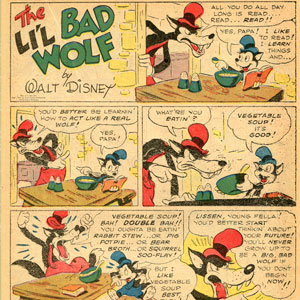
That covers the titular “Comics,” but what of the enshrined “Stories”? This miraculous little magazine has always delivered text pieces, including for a time in the 1940s, “Hollywood Chatter.” Reported by Minnie Mouse, this feature was a light-hearted gossip column, in which Miss Mouse chronicled stories about real-life movie stars like Bette Davis, Don Ameche, Lassie (sorry, Pluto), and Mickey (Rooney, not Mouse). The comic magazine also featured playful prose — sometimes adaptations of Disney cartoons — with illustrations by such comic-book veterans as Paul Murry and Tony Strobl.
One of the longest running comic books — or any other kind of periodical ever — Walt Disney Comics and Stories is still published today. For the first 44 years of its run this storied comic book was published by Western Publishing (variously under the Dell, Gold Key and Whitman imprints). Since then, the venerable funny book has been printed by, among other publishers, Gladstone, a comics company run by comics fans and collectors, named in honor of Gladstone Gander, Donald Duck’s cousin introduced in Walt Disney’s Comics in January 1948, issue #88). In September 2009, BOOM! Comics became the new publisher of Walt Disney Comics and Stories. Taking a fresh approach, the BOOM! Version has showcased epic Mickey Mouse adventures, including “Ultraheroes” and “Mickey Mouse and the World to Come.” “Between Iron Man, Spider-Man, and all these superhero movies grade-school kids are totally taken with the genre,” notes BOOM! publisher Ross Richie. “What better way to engage those that haven’t read Mickey or Donald stories, than to publish comics featuring the superhero version of them?” After that exhilarating start, BOOM! has announced that Walt Disney’s Comics will return to its traditional anthology format with the January 2011 issue, #715: a special 70th anniversary edition featuring delectable comic tales by Carl Barks, Gil Turner and modern-day Duck master Don Rosa. This oversized album will be available with two specially created collectable covers: a Disney character mash-up by modern-day comics ace Daan Jippes; and a parody of the famous issue # 1 Donald Duck cover by comics-fan favorite William Van Horn, showcasing the Big Bad Wolf! “We’re having a blast and can’t believe that we’ve come so far in such a short amount of time,” Ross said. “Simply put, Disney has the greatest characters in the world. [Publishing Walt Disney’s Comics is] a huge honor and a monster opportunity.”

Now that we’ve looked ahead to a fabulous future, let’s take another peek back to celebrate the 70th anniversary of this supreme journal of Disney cartoon art in style: In the 25th anniversary issue, #300, September 1965, loyal readers were surprised with a special birthday message: “Ever since October 1940, Walt Disney Comics and Stories has been published continuously every month — an all-time record for a comic magazine. In addition, the stories have been translated into almost every language and published in nearly every country. Thus, through the years, millions upon millions of copies have brought good entertainment to young and old, all around the world.” Here’s to another 70 years of humorous escapades, adventures near and far and colorful hi-jinks that tickle both the funny bone and the thirsty noggin, all waiting within the covers of Disney’s flagship comic book, the unstoppable Walt Disney’s Comics and Stories.



